How to tie up raspberries?
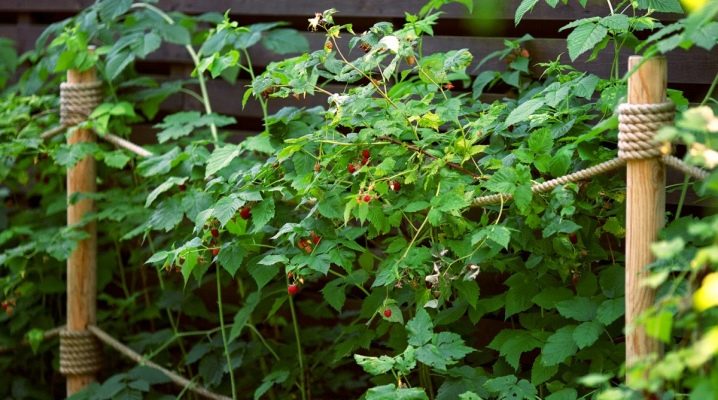
A garter of raspberry bushes is an integral part of proper care for this type of plant.... It is worth noting that this process is quite laborious and requires certain theoretical knowledge and practical skills. At the same time, knowing when and how to tie raspberries correctly, you can multiply the yield.
In parallel, we will talk about strengthening the bushes and effectively protecting the raspberry from many diseases. Thanks to such an agrotechnical procedure, it is possible to provide the most comfortable conditions for harvesting.
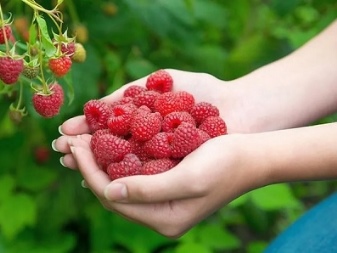
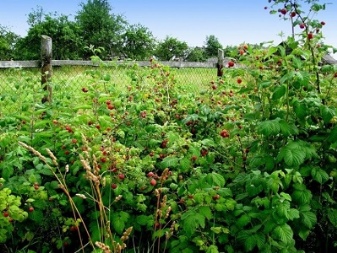
The need for a procedure
It is no secret that without proper care in compliance with a whole list of rules, it makes no sense to count on a high yield of raspberry bushes and the quality of the fruits themselves. And in this case, competent tying will be a mandatory procedure. It is worth noting that neglecting it will inevitably lead to a sharp reduction in harvest volumes, as well as a decrease in the size of berries and a deterioration in their taste. At the same time, it is important to know how quickly, but at the same time correctly and beautifully, to perform the garter, which is especially important for novice gardeners.
In fairness, it should be noted that not in all cases it is required to tie up raspberry bushes in order to eventually harvest a good harvest of large and tasty berries. The growing algorithm for some varieties does not provide for mandatory performance of the described actions. But for the vast majority of species, such gardening activities are vital. This is due to the fact that the shoots can be deformed due to the following factors:
- gusts of strong wind;
- lingering and heavy rainfall;
- abundant fruiting;
- excessive height of the bush.


Among other things, one of the clear advantages of tying is to make the harvesting process as easy as possible. Naturally, it is much better to do this when the thorny shoots that tend to grow in different directions are neatly and orderly. But the primary task of the measures under consideration is to increase yields. At the same time, one of the main conditions for obtaining large, juicy and tasty fruits will be to ensure abundant lighting and air access to the plants.
In the context of the goals of the garter, taking into account the time frame, the following points should be highlighted:
- in the spring, it is important to have time to complete the work before the buds on the shoots begin to bloom;
- at the end of the autumn period, raspberries are tied up to ensure maximum plant safety during wintering at low temperatures.
Basically, the raspberry itself is considered an unpretentious plant. However, this does not mean that you can ignore the key components of regular shrub maintenance.
As long-term practice proves, without pruning and garters, the raspberry tree will inevitably grow young and run wild, which will negatively affect both fruiting and the health of the crop.
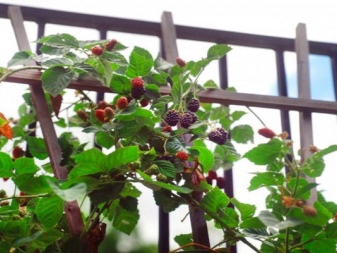
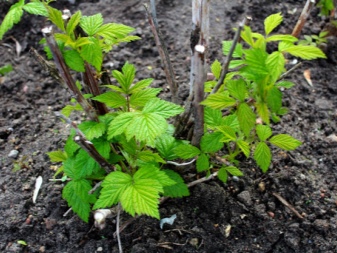
The main advantages of the considered garden activities include the following factors.
- Effective protection of plants from the emergence and development of fungal and other infectious diseases.
- Minimizing the risks of attack by harmful insects.
- Creation of favorable conditions for germination and active development of young central shoots.
- Prevention of damage to the branches of bushes with abundant fruiting and ripening of the crop.
- Protection of plants from the negative effects of environmental factors.As a rule, competently tied raspberries are not afraid of even the most abundant rainfall in summer and autumn.
- Stimulation of the processes of ovary formation and ripening of the berries themselves.
- Creation of conditions for uniform ripening of fruits.
- Maximum simplification of bushes care and harvesting.
It is important to remember that when planting is compacted, bushes and shoots that find themselves in the thickest are susceptible not only to diseases, but also to rapid death. There is no need to tie up branches without fail when growing raspberry varieties with thick and strong shoots. Such bushes will grow well in the country, in the garden and in the garden on their own due to their increased stability. Most often, these species are planted in beds within 60 cm wide. Care in such situations involves the periodic removal of the shoots.
It is also important to consider that do not tie a raspberry to a strong trunk until its height exceeds 1.5 m. Taking into account the climatic characteristics of different regions, breeders are constantly working on breeding raspberry varieties that are most resistant to various weather conditions. So, the most unpretentious and not requiring a garter include "Balsam", "Ruby Bulgarian", "White Spirina", "Modest" and "Coral"... Especially popular with modern gardeners are repairing varieties, one of the main characteristics of which is strong shoots.
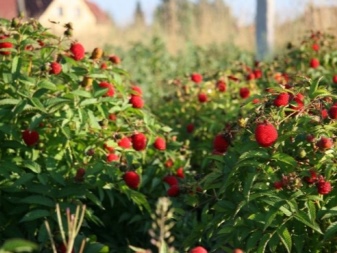

Materials (edit)
Despite the fact that the procedure for tying raspberry shoots may seem simple at first glance, it will require not only certain knowledge and skills. In addition, you will have to take care of the availability of appropriate tools and, of course, consumables. The list of the latter, depending on the chosen method, may include:
- strong nylon threads or ribbons;
- twine made of harsh threads;
- wooden slats 2 m long;
- concrete pipes (abutting);
- posts made of metal;
- wooden or plastic stakes;
- steel rods;
- leg-split;
- synthetic fabric strips;
- wire with a plastic sheath.
Naturally, this is not a complete list of materials that are successfully used by gardeners to implement the described agrotechnical measures. In practice, using ingenuity, they are able to implement a wide variety of methods easily, reliably, but at the same time carefully tie the shoots so that the raspberries do not fall under the weight of the berries or due to rain and wind.
The main thing is that the materials used do not injure the plant.
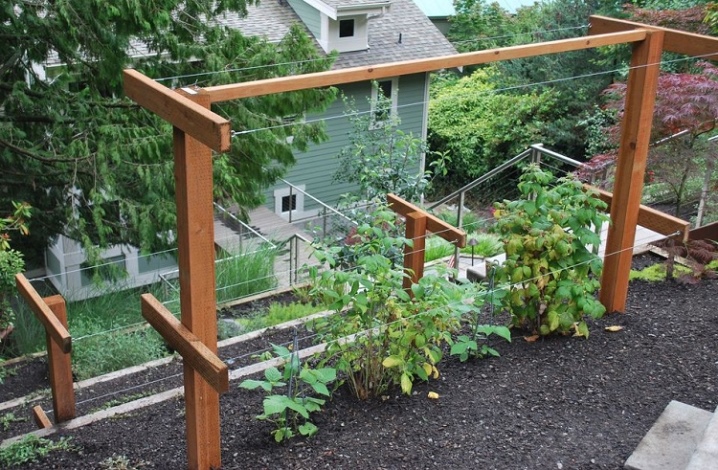
Methods
The high yield of most raspberry bushes is possible only with their correct and, most importantly, timely tying. In this case, the key point is the skill and experience of the gardener, as well as the features of the chosen method of fixing the shoots. It is no secret that it is not enough just to purchase and plant a good variety of raspberries. Without proper care, the berries are very quickly crushed, they will lose their taste, and as a result, the bushes may stop yielding altogether. That is why it is recommended to pay special attention to choosing the most suitable garter method.
At the moment, three main options are used, each of which has managed to establish itself exclusively from the positive side. These methods have been successfully used for many decades and at the same time maximize the yield of berry crops. And in this case we are talking about the following methods:
- bunch, also called stake;
- trellis;
- fan.
Naturally, the choice in favor of a particular option is determined by the characteristics of the processed raspberry variety, the availability of materials from the gardener, as well as his personal preferences and experience.
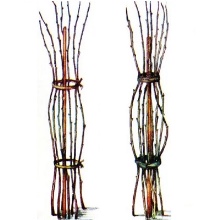
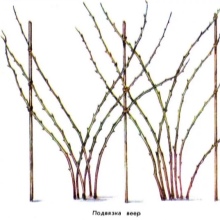
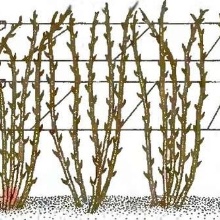
Climatic conditions in the region will play an equally important role. By the way, taking into account the listed criteria, experienced gardeners often practice combined garter methods, which include elements of all three of these techniques.
Particular attention should be paid to the single tying of the bushes, which will be the best solution for small areas. The algorithm of actions in this case is as follows.
- Prepare two 2-meter posts with supports.
- Place them along the edges of the raspberry tree (interval within 3-4 m) and bury them to a depth of 0.5 m.
- Pull 2-3 rows of steel wire or strong plastic thread horizontally between the posts.
- Tie up the shoots. It is important to consider that branches with ovaries are located separately from the rest. In this case, the edges of the shoots should not be located more than 20 cm above the upper row of the wire.
The main advantage of this method is the reliable protection of the bushes from wind gusts.... If we talk about its shortcomings, it should be noted that this approach increases the risk of damage to young shoots. Tying at the bottom to a plastic wire will allow you to avoid breaking off the growth.
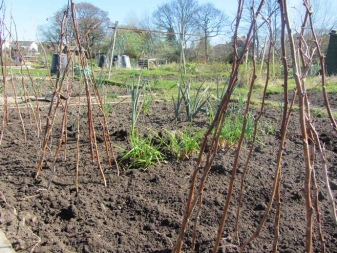
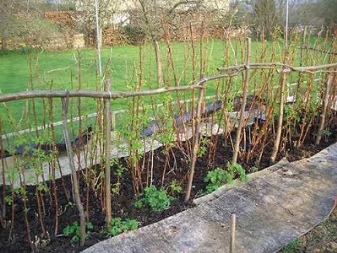
Kolovy
The main feature of this method of erecting structures for a garter is that a 2-meter stake or rail is placed in the center (hammered into the ground). It should eventually be 0.4 or 0.5 m higher than the bushes. After that, you need:
- carefully collect 6-7 shoots in a bunch around this rack, one and a half meters from the ground;
- neatly fix the stems on the rail in the center;
- take the tops to the side, bending it in an arc, and also fix it.
As a basis, you can successfully use not only lumber, but also concrete and metal pipes. Evaluating the features and effectiveness of this method of tying raspberry bushes, it is worth highlighting the following clear advantages:
- maximum simplification of the subsequent care of plants;
- an intuitive principle, even for inexperienced, novice gardeners;
- minimum labor intensity;
- lack of significant financial and time costs.
However, it was not without its drawbacks. With such a garter of shoots, the ovaries that are inside will not develop quickly enough. There is a risk of stem damage in adverse weather conditions. Also, do not forget about the inadequate ventilation of bushes tied in such a way, which in itself leads to the development of infections and attacks of harmful insects.
An equally important point is the uneven distribution of light fluxes that affect growth and fruiting.
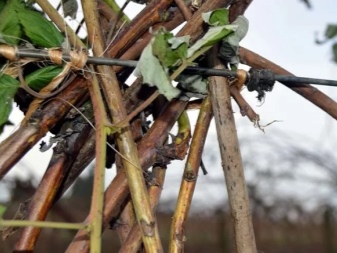
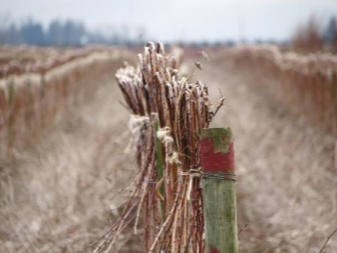
Shpalerny
Tying raspberry bushes to trellises is today a universal and probably the most common method. It is successfully practiced by gardeners around the world, who use a variety of consumables for its implementation. It is worth noting that there are several options for tying plants to trellises. And one of them is a "pistol", or a double garter, in which the following steps must be followed:
- prepare two 2-meter slats;
- strengthen them in the ground every 4 m;
- at a height of 1 and 1.5 m from the ground, make two parallel stretch lines of soft wire;
- tie the stems of the bushes at two corresponding points, evenly distributing them between the supports of the structure;
- fix the shoots at a distance of about 0.5 m from each other.
The indisputable advantages of the trellis method include, first of all, the guarantee of the appearance of a large number of young growth, which, in turn, will have a positive effect on the yield of the bushes. It is equally important that each stem gets enough light and is well ventilated. If we talk about the shortcomings, then first of all it should be noted that it will not be very convenient to harvest. In addition, there is a possibility of branches breaking off.
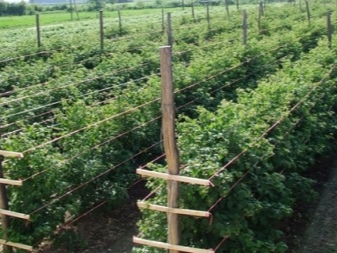
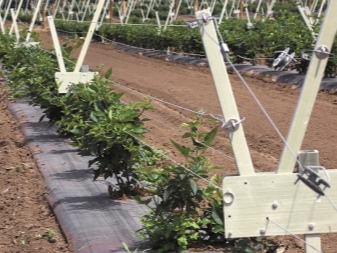
Fanny
In this case, we mean not the easiest to implement, but the method that has proven its effectiveness at the same time. It consists in the fact that between the raspberry bushes, two racks about 2 meters long are vertically hammered into the ground. After that, the raspberry tree is divided into two groups of stems. The first is tied to one, and the second to the other columns. As a result, the landing looks like a huge fan. It is worth noting that gardeners consider this garter method quite difficult... However, experienced gardeners and specialists characterize it as one of the most successful.
The main advantage here lies in the even distribution of light between all the shoots, which ensures their full development, and, consequently, high yields. It is no less significant that with such a distribution of branches, fruiting ones will not interfere with the growth of other stems. In parallel, the risk of breaking off shoots and their deformation is practically leveled. Good air circulation is ensured inside the raspberry tree, which in itself prevents the occurrence of diseases. Don't forget about the convenience of harvesting.
The main disadvantage of the method can be called its labor intensity, which will create certain difficulties and require appropriate resources when processing bushes on the scale of large nurseries.
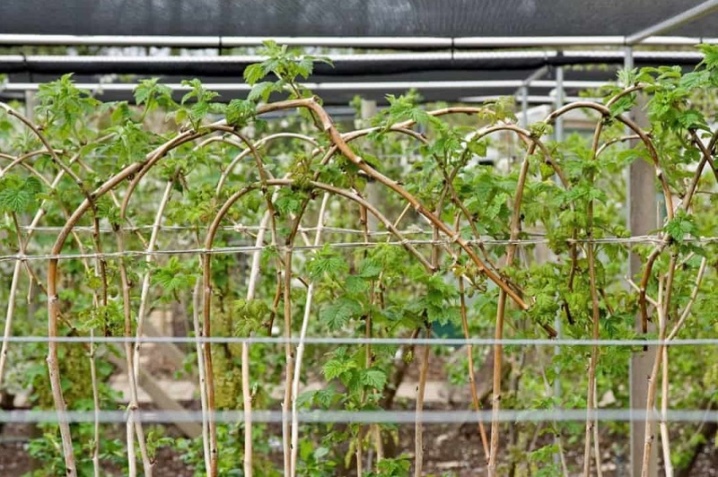
Scandinavian
In many ways, this option is similar to the "pistol" described above. The main difference is the height of the tie-up of the shoots. The upper row of wire is placed not 1.5, but 2 meters above the ground. And the branches themselves, as it were, are wound along the stretch marks in the form of the letter "V". The main advantages of the method:
- good ventilation of the bushes;
- convenience of picking berries;
- simplification of the inspection of plants and their care, including during treatment.
The only significant disadvantage in this case is the risk of damage to the stems.

Movable turnstile
This option provides for the installation of a mobile structure based on hinges. The key feature of the method is that it allows you to adjust the location of the branches at all stages of the growing season. This refers to the change in the coordination of branches from vertical to horizontal and vice versa. In this case, the shoots are attached to the supports, and the slope of the side bars, if necessary, is changed by 120 degrees. It is important to consider the following clear benefits:
- branches may well not be removed from the trellises for the winter;
- when the structure turns to the west, ripening fruits are located on one side of the trellis, which greatly simplifies their collection.
The main disadvantage is, of course, the complexity of the installation of the base itself.
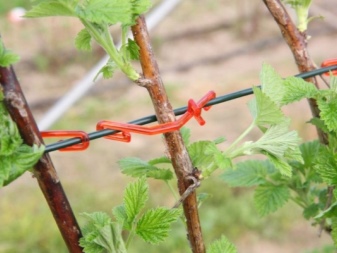
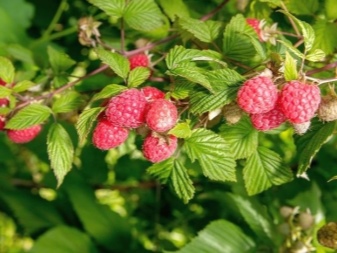
Useful Tips
For the correct implementation of the raspberry garter, it is required to familiarize yourself with the relevant norms of agricultural technology, as well as know the timing of the stages of the growing season of the treated plants... The procedure itself is recommended to be carried out in early spring, after unnecessary shoots have been cut off. This is due to the fact that at this stage, the buds have not yet begun to bloom. The second option is to tie the bushes just before winter, after the foliage has fallen off. It is worth noting that this approach allows you to reliably protect raspberry bushes from adverse weather conditions. The correct grouping of the stems greatly increases the chances that the raspberry tree will successfully overwinter even in severe frosts.
During pre-winter processing, the wire on which the branches will be fixed is placed 20 cm from the ground, which prevents them from freezing. In this case, the stems are under the snow cover, which is a reliable protection. It should be emphasized that tightening with a garter of raspberry bushes, especially before the winter period, can have extremely negative consequences. It is important that the procedure is performed while the branches still have natural flexibility. Otherwise, it will not be possible to avoid breaking them off.
In addition to everything that has already been stated, it should be noted that theoretical knowledge about the correct garter belt and the corresponding skills will not be enough. An equally significant point is the competent formation of the bush.It is about taking into account the need for pruning and thinning the raspberry tree itself in the process of tying up the shoots.
It also makes sense to remind once again that not all varieties known today are relevant to the obligatory garter of shoots.
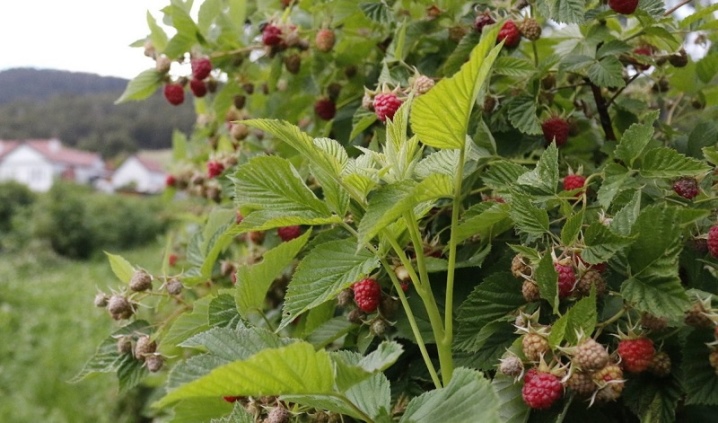













The comment was sent successfully.